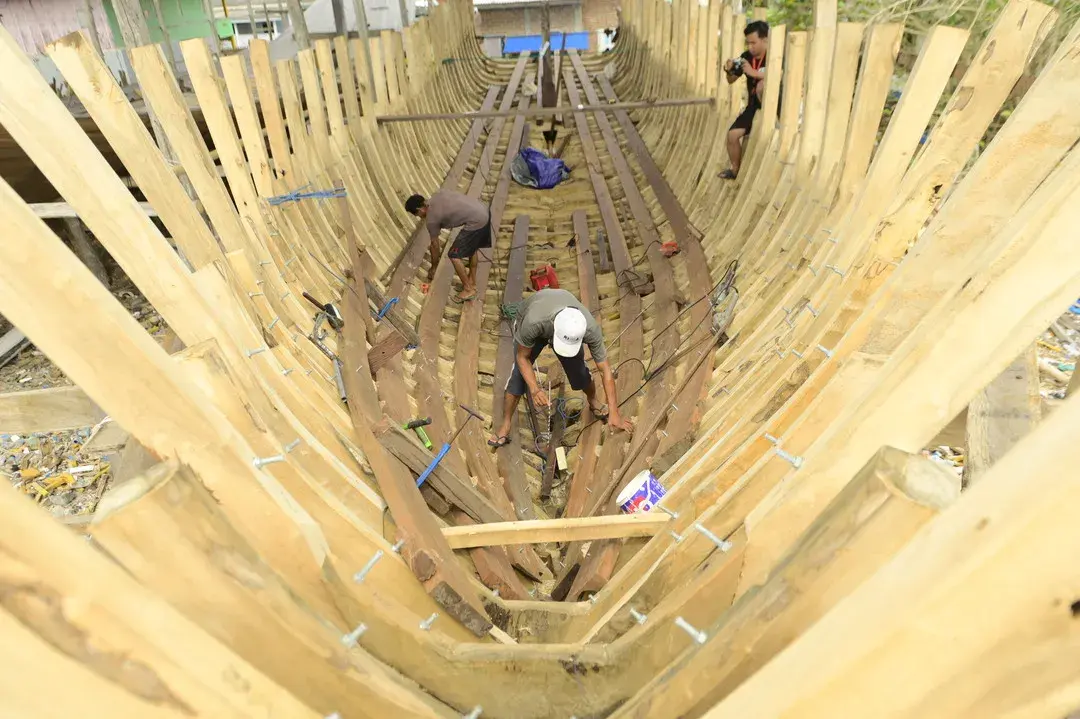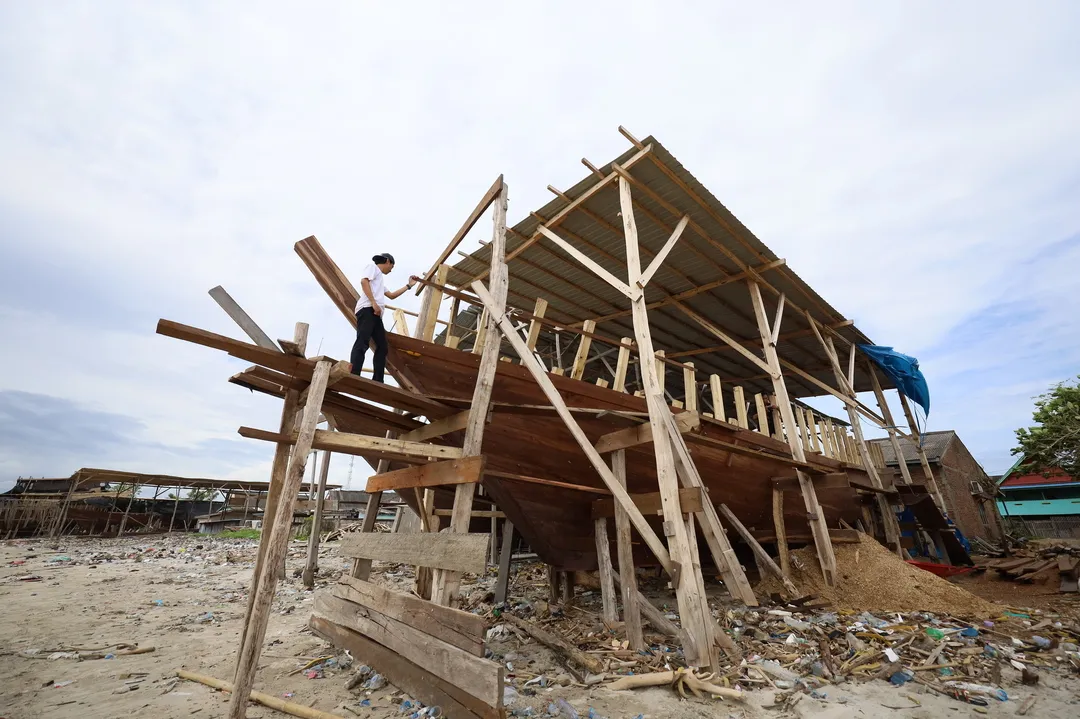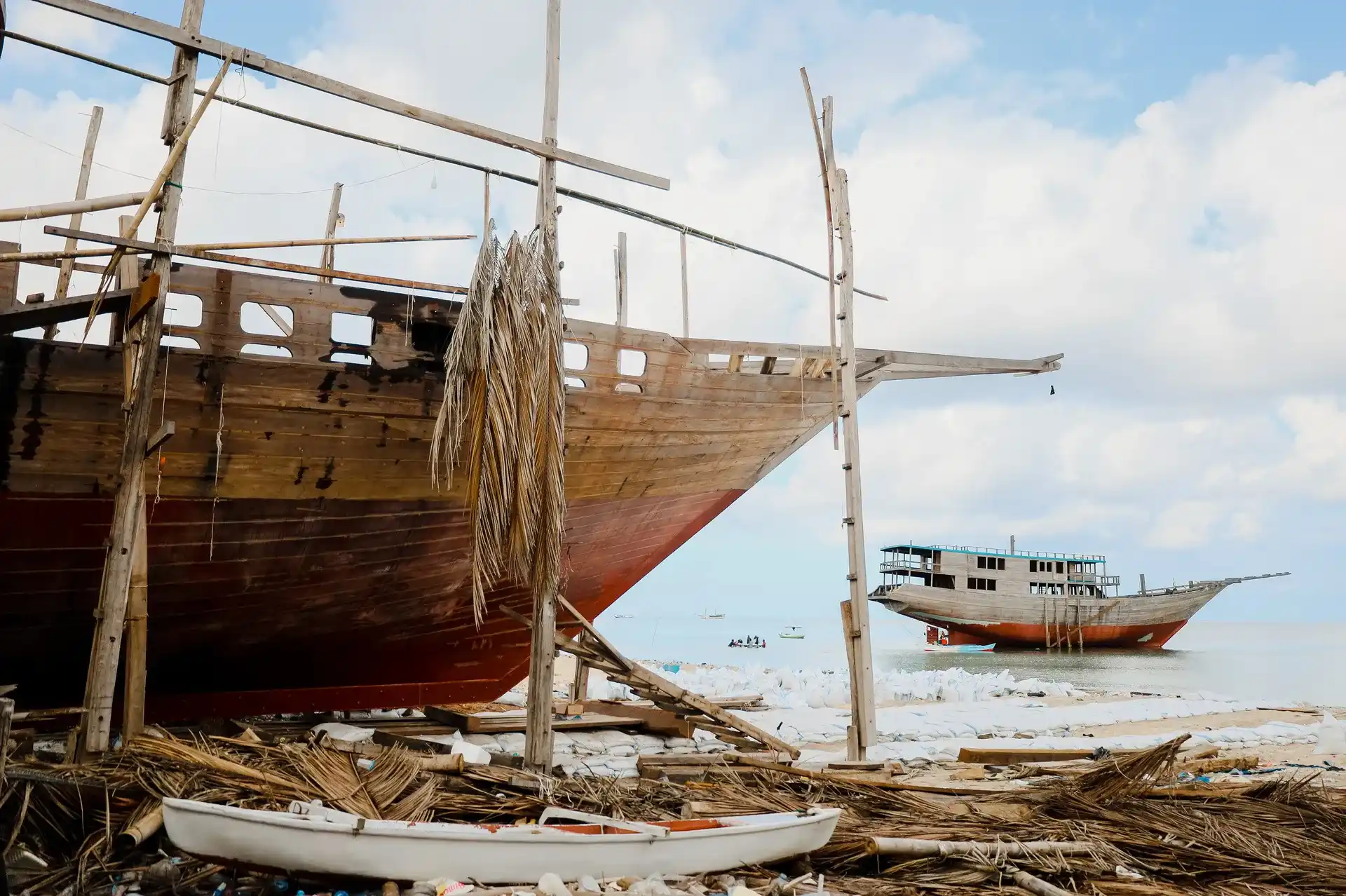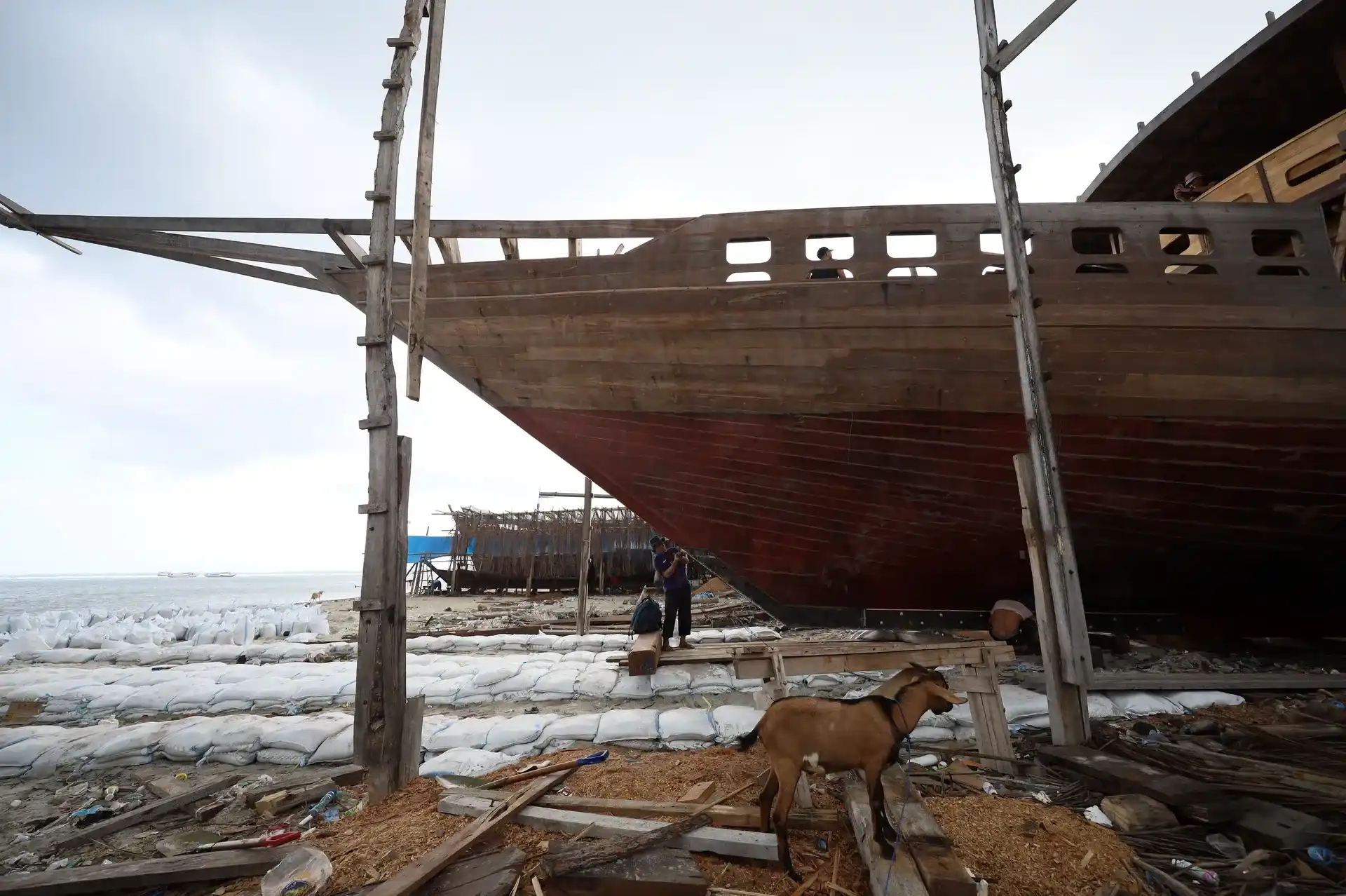How Phinisi Boats Are Made in Tana Beru: Craft, Culture & Ceremony

How Phinisi boats are made in Tana Beru tells a story of skill, soul, and tradition passed down through generations. Nestled in Bulukumba, South Sulawesi, this village is the spiritual home of Phinisi construction, where the craft remains a living heritage recognized by UNESCO.
But what exactly goes into building a Phinisi here?
Where Is Tana Beru and Why Is It Known for Phinisi?
Tana Beru isn’t just a destination—it’s the beating heart of Indonesia’s living maritime legacy. This small coastal village holds a globally respected place in the world of wooden shipbuilding. Here’s why it stands out:
- It is one of the last remaining places in Indonesia where traditional wooden boatbuilding is actively practiced every day.
- Tana Beru is home to master builders known as punggawa, who carry on centuries-old techniques passed down through generations.
- The village is widely recognized for producing the iconic Phinisi schooners, still built by hand without modern machinery or blueprints.
- It has become a symbol of Indonesia’s maritime identity, drawing visitors, scholars, and sailors from around the world.
Read Also: How Wooden Boats Are Made in Indonesia: A Step-by-Step Look at a Living Tradition
Step-by-Step: How Phinisi Boats Are Made in Tana Beru
Crafting a Phinisi in Tana Beru is a deeply layered process that blends precision, heritage, and spirituality. Each step reflects the skill and cultural wisdom passed down orally for generations:
1. Timber Selection
The process begins with selecting the right types of wood—typically Teak, Bitti, or Ironwood. These are prized for their durability, water resistance, and ability to bend without breaking.
Timber is often seasoned and sun-dried for weeks to prevent warping and ensure it can withstand years at sea.
2. Manual Tools
Builders use only traditional hand tools like adzes, chisels, and handsaws. There are no machines here—every curve and cut is shaped by practiced hands.
These tools are often custom-made or handed down from older generations, becoming part of the craft’s lineage.
3. No Blueprints
There are no formal plans or digital drawings. Instead, punggawa (master boatbuilders) use mental maps and measurements stored in memory.
This knowledge is gained through years of apprenticeship, observation, and oral transmission from master to student.
4. Construction Phases
The build unfolds in a sacred and methodical sequence:
- Keel laying: The foundation of the boat is laid with a ceremonial offering.
- Framing: Wooden ribs are added to give the boat its shape.
- Hull shaping: Planks are fitted together with wooden dowels—not nails—to form the exterior.
- Decking: Floorboards and living quarters are installed.
- Mast and sail installation: Two towering masts are raised and fitted with hand-sewn sails.
- Launch ceremony: The boat is blessed and pushed to sea with community participation, marking its readiness.
This step-by-step process can take several months to years, depending on the size and complexity of the vessel, as well as the availability of materials and adherence to cultural customs.
Sacred Rituals and Spiritual Guidance
Building a Phinisi in Tana Beru is not only a feat of craftsmanship—it’s a sacred ritual deeply rooted in ancestral beliefs and spiritual customs. Each stage of the process is guided by ceremonies and cultural taboos that elevate the construction beyond technical work:
1. Keel-Laying Ceremony
The journey begins with a keel-laying ritual, where offerings—such as rice, coins, or incense—are placed beneath the keel.
Local elders or spiritual leaders lead prayers to bless the vessel with protection and smooth passage. This step marks the boat’s spiritual “birth.”
2. Taboos and Auspicious Timing
Builders observe taboos that align with local cosmology. Certain days are avoided for key construction tasks, while others—deemed spiritually favorable—are chosen intentionally. Ignoring these beliefs is thought to bring bad luck or sea misfortune.
3. Boat as a Living Being
A Phinisi is not treated as an object, but as a living being with a soul. Builders speak respectfully to it, and any harm to the structure is considered spiritually significant. This mindset fosters deep reverence and care throughout the building process.
4. Role of Elders and Ritual Leaders
Punggawa (master builders) and village elders take on the role of ceremonial leaders, guiding the spiritual dimension of the building.
Their presence ensures cultural continuity and reinforces the community’s collective identity through each completed vessel.
Read Also: How Indonesia’s Traditional Boat Builders Are Preserving Culture
Who Builds the Phinisi in Tana Beru?
Building a vessel of this scale and cultural weight requires more than technical ability—it demands deep trust, spiritual guidance, and inherited knowledge passed down through time. Here’s who brings it all to life:
1. Punggawa (Master Builder)
Leads the entire construction process based on oral tradition, deep intuition, and cultural responsibility. They carry the vision and make all key decisions without blueprints.
2. Artisan Team (30–50 people)
Includes framesmiths, hull joiners, riggers, wood carvers, caulkers, and helpers—each specializing in a different part of the boat’s anatomy.
3. Family-Based Craftsmanship
Most skills are inherited through generations, passed from parent to child. Many crews are formed from extended families or close-knit village communities.
4. Spiritual and Cultural Roles
In addition to technical skills, some members assist in performing rituals and observing taboos during key stages of construction.
5. Collaborative Spirit
Though led by the punggawa, the build is highly collaborative—every worker’s knowledge and timing contributes to the final result.
How Long Does It Take to Build a Phinisi?
Building a Phinisi is not rushed—it’s a balance of craftsmanship, nature, and ritual. The timeline depends not just on size, but on tradition and the environment that surrounds it. Timeframes vary by vessel type and cultural depth:
1. Small Phinisi (20–25 m)
Typically completed in 6 to 8 months, these boats are often used for private use, coastal travel, or smaller tour operations. Despite their size, the same care and rituals apply.
2. Large Liveaboard Vessels (30 m or more)
These can take 12 to 24 months or longer to complete. With multiple decks, cabins, and intricate rigging, these ships require a larger workforce and more elaborate construction phases.
3. Influencing Factors
- Seasonal weather in Bulukumba can delay certain phases like drying wood or installing sails.
- Timber availability—especially for ironwood or teak—may pause progress until materials are sourced sustainably.
- Cultural ceremonies such as keel-laying and launching must follow traditional calendars and taboos, adding meaningful pauses to the timeline.
What Tools Are Used in Boatbuilding?
In Tana Beru, boatbuilding is where time-honored craftsmanship meets raw natural elements. The tools and materials used are not just practical—they reflect the soul of the tradition. Here are these tools:
1. Hand Tools
Traditional builders rely on chisels, hand saws, planes, and manual drills. These tools allow for careful, precise shaping of timber and are passed down through generations. Their use keeps the build intimate and controlled—crafted by feel, not machines.
2. Natural Materials
The structure of a Phinisi is made with ironwood (ulin), teak, or bitti, known for their resistance to rot and seawater.
Tree resin is used for sealing joints, while natural rope—often made from coconut husk or cotton—is key for rigging and fastening.
3. Selective Use of Modern Tools
While some builders may incorporate power saws or electric drills for efficiency, the core of the process remains deeply traditional.
Authenticity is preserved through manual techniques, ensuring every curve and joint reflects generations of knowledge.
The art of building Phinisi boats in Tana Beru is more than craftsmanship—it’s a living tradition shaped by hands, heritage, and heart.
Every timber cut and rope tied carries centuries of seafaring knowledge passed down through ritual and rhythm.
If you’re ready to move beyond reading and truly experience how Phinisi are made, it’s time to witness the process in person.
Read Also: The History of Phinisi Boats from Bulukumba: Indonesia’s Timeless Sail
Step Into the Tradition: Boat Construction at Riara Marine
Want to go beyond just learning about Phinisi? At Riara Marine in Bulukumba, you can experience the heart of Indonesia’s maritime legacy up close.
Here, you won’t just see boats being built—you’ll walk alongside the master builders who shape them by hand.
- Observe every stage of construction, from raw timber to final sail
- Learn ancient techniques passed down through generations
- Try your hand at carving, shaping, or tying ropes under expert guidance
- Feel the spirit of heritage in a working shipyard—not a display
This is cultural immersion in motion. Spots are limited—book your Boat Construction tour now and become part of a living tradition that still sails the seas today.



